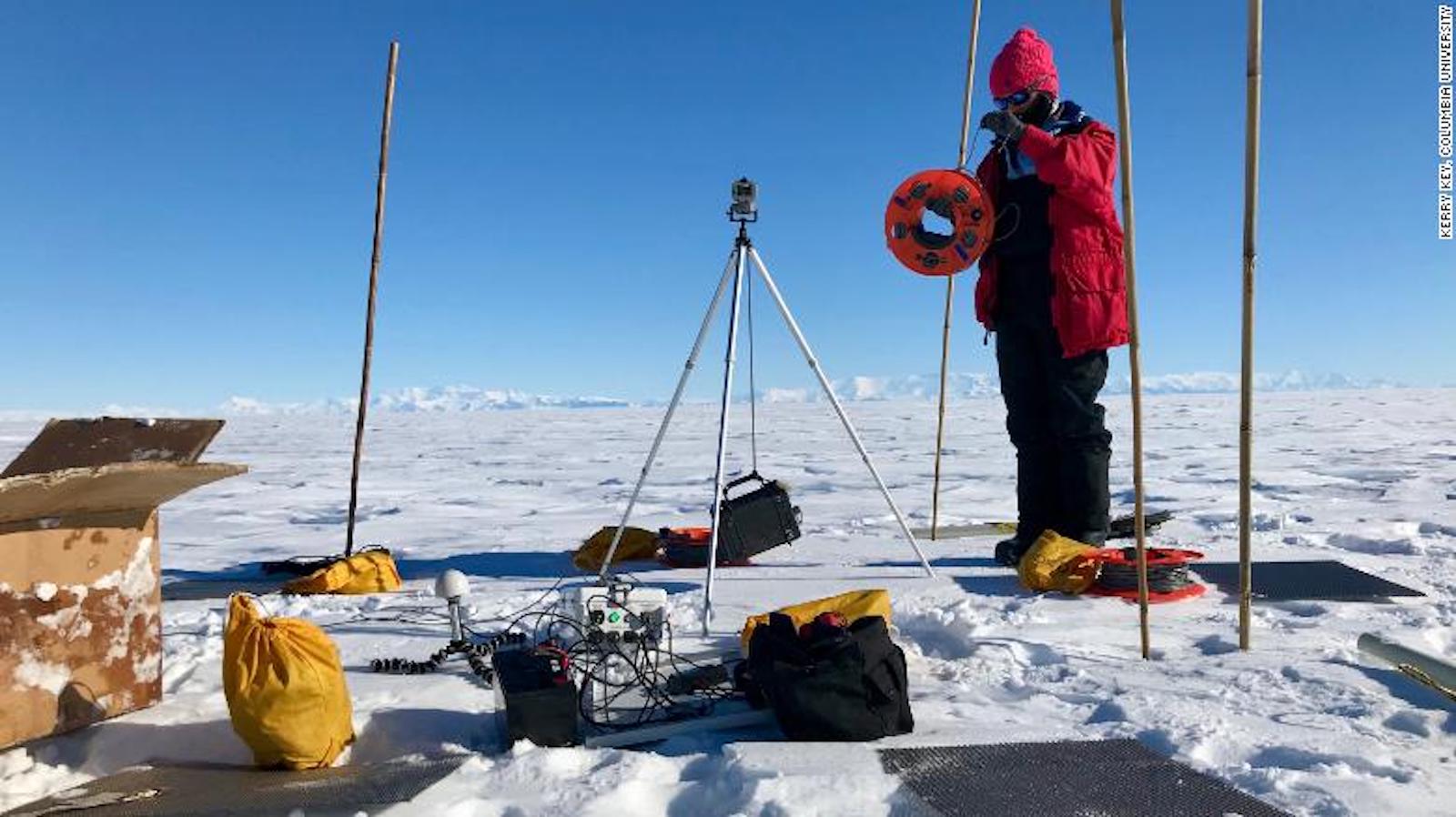(CNN) – Hidden deep in the ice that covers Antarctica, scientists have discovered enormous amounts of water.
The groundwater system is found in deep sediments in western Antarctica and is likely to have the stability of wet sponges. According to new research, this system exposes an unnamed part of the region and could have implications for how the frozen continent responds to the climate crisis.
“People think there may be deep groundwater in these sediments, but so far no one has done detailed imaging,” said Chloe Gustafson, a professor of oceanography at the Scripps Institution at the University of California. In a report from San Diego, California.

Chloe Gustafsson, a researcher at the UC San Diego Scripps Institution of Oceanography, is preparing to set up a magnetodelluric station to create a map under the snow during fieldwork in Antarctica in 2018. (Credit: Kerry Key / Columbia University)
“Antarctica has the potential to rise to 57 meters above sea level, so we want to make sure that we integrate all the processes that control how ice flows from the continent into the oceans. Groundwater is a process that is currently missing.” He added in an email.
Research on water in Antarctica
The ice covering Antarctica is not a solid whole. Researchers in Antarctica have discovered in recent years that hundreds of interconnected liquid lakes and rivers are under the same ice. But this is the first time that there is a large amount of liquid water in the sediments beneath the ice.
The authors of the study, published in the journal Science on Thursday, focused on the 60-mile-wide Villains Ice Stream, one of the half-dozen streams that feed on the world’s largest iceberg, the Rose Ice Shelf. The size of the Yukon Territory of Canada.
Gustafson and his colleagues mapped out six weeks of snow-covered sediments in 2018. To operate a technique called magnetodelluric imaging, the research team used geophysical instruments placed directly on the surface.
This technique can detect different levels of electromagnetic energy conducted by ice, sediment, freshwater bedrock and saltwater and generate a map from these different sources of information.
“We filmed about five kilometers from the ice and even deeper,” said Kerry Kee, associate professor of earth and environmental sciences at Columbia University.
Researchers have calculated that if they squeeze groundwater from sediments within 100 square kilometers of the surface, it will form a lake 220 to 820 meters deep.
“The height of the antenna of the Empire State Building is about 420 meters,” said Gustafson, a graduate student at Columbia University’s Lamont-Doherty Earth Observatory.
“At the shallow end, the water rises in half of the Empire State Building. At the deep end, almost two Empire States are stacked one on top of the other. The sub-glacial lakes in this area range from 2 to 15 meters. It’s like one to four floors of the Empire State Building. “
How did they get there?
The mapping revealed that as a result of how the groundwater system formed, the water became saline with depth.
Seawater reached the region during a warm period 5,000 to 7,000 years ago, completing the sediment with salt seawater. As the ice progressed, new melting water produced by pressure from the top and friction at the bottom of the ice was pushed into the upper sediments. Kee said it will continue to leak and mix with groundwater today.
The researchers said more work was needed to understand the implications of groundwater discovery, especially in relation to the climate crisis and rising sea levels.
The slow exit of water from the ice into the sediment can prevent water from stagnating at the base of the ice, which acts as a brake on the progress of the ice toward the ocean.
However, if the surface ice is thin, a reduction in pressure will allow this deeper water to escape. This upward movement will lubricate the bottom of the ice and accelerate its flow.
Winnie Sue, an assistant professor at the Georgia Institute of Technology, said: “This discovery highlights the importance of groundwater hydrology in understanding the effect of water flow on Antarctic ice mechanics.





:quality(85)/cloudfront-us-east-1.images.arcpublishing.com/infobae/KTKFKR763RBZ5BDQZJ36S5QUHM.jpg)